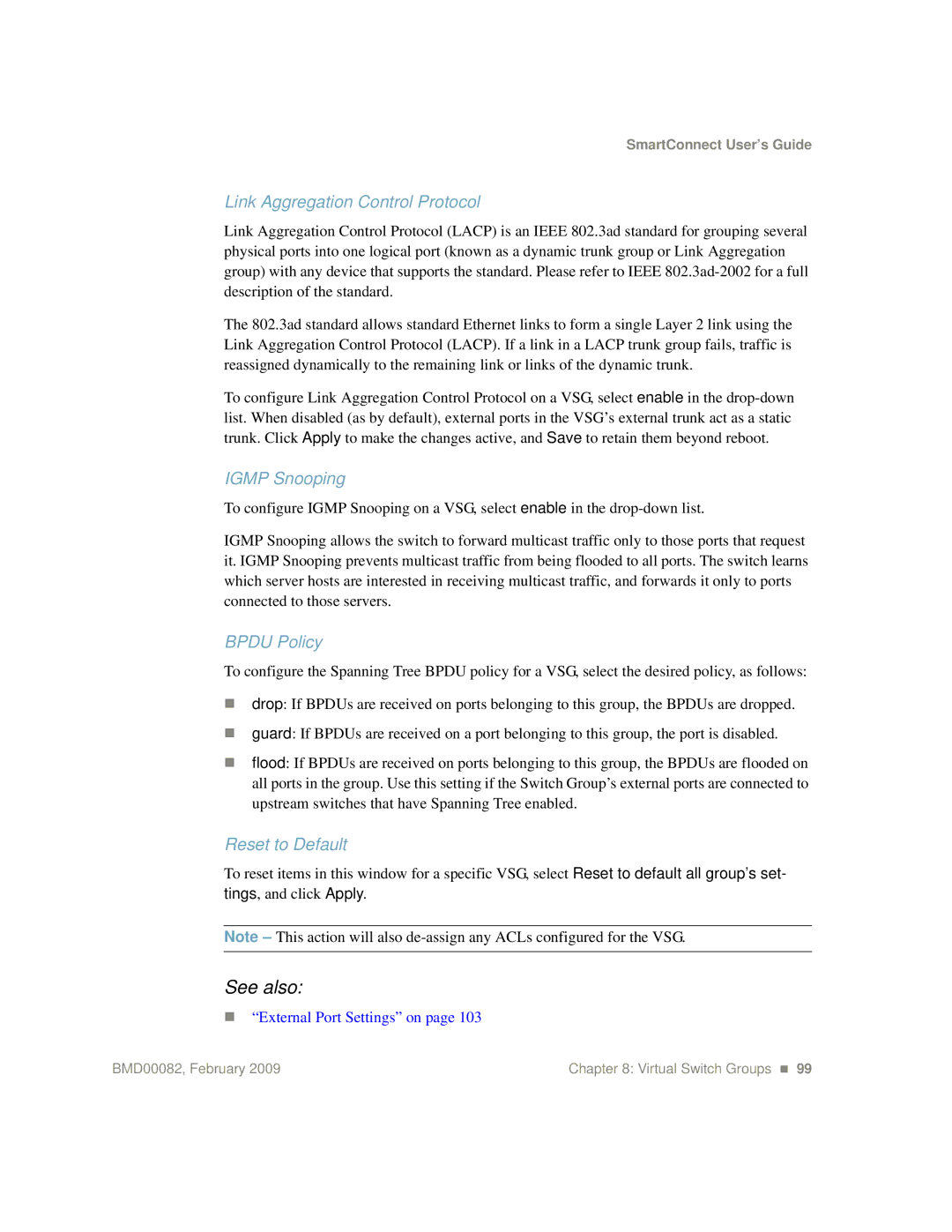SmartConnect User’s Guide
Link Aggregation Control Protocol
Link Aggregation Control Protocol (LACP) is an IEEE 802.3ad standard for grouping several physical ports into one logical port (known as a dynamic trunk group or Link Aggregation group) with any device that supports the standard. Please refer to IEEE
The 802.3ad standard allows standard Ethernet links to form a single Layer 2 link using the Link Aggregation Control Protocol (LACP). If a link in a LACP trunk group fails, traffic is reassigned dynamically to the remaining link or links of the dynamic trunk.
To configure Link Aggregation Control Protocol on a VSG, select enable in the
IGMP Snooping
To configure IGMP Snooping on a VSG, select enable in the
IGMP Snooping allows the switch to forward multicast traffic only to those ports that request it. IGMP Snooping prevents multicast traffic from being flooded to all ports. The switch learns which server hosts are interested in receiving multicast traffic, and forwards it only to ports connected to those servers.
BPDU Policy
To configure the Spanning Tree BPDU policy for a VSG, select the desired policy, as follows:
drop: If BPDUs are received on ports belonging to this group, the BPDUs are dropped.
guard: If BPDUs are received on a port belonging to this group, the port is disabled.
flood: If BPDUs are received on ports belonging to this group, the BPDUs are flooded on all ports in the group. Use this setting if the Switch Group’s external ports are connected to upstream switches that have Spanning Tree enabled.
Reset to Default
To reset items in this window for a specific VSG, select Reset to default all group’s set- tings, and click Apply.
Note – This action will also
See also:
“External Port Settings” on page 103
BMD00082, February 2009 | Chapter 8: Virtual Switch Groups 99 |
